Actinic Keratosis
Protect Your Skin from Actinic Keratosis: A Precancerous Skin Condition
Actinic Keratosis (AK) manifests as rough, scaly patches or lesions on the skin, commonly found on areas frequently exposed to the sun, such as the face, ears, neck, lips, forearms, and the backs of the hands. These lesions are often a result of prolonged sun exposure and can be an early warning sign of potential skin cancer.
If you have a light complexion, blonde or red hair, blue or green eyes, or have spent a lot of time in the sun throughout your life, you’re at a higher risk for developing Actinic Keratosis. Those who spend significant time outdoors, especially in sunny climates, are particularly susceptible. AK is most often seen in individuals aged forty and older.
Because Actinic Keratosis is considered a precancerous condition, it’s important to address it promptly with the help of a dermatologist. Regular visits to Dermatology Affiliates allow our skin experts to monitor your skin, treat any lesions, and help prevent the progression of Actinic Keratosis into more serious conditions.
Stay proactive about your skin health—schedule a total body skin exam with our team today and take the first step in protecting your skin from Actinic Keratosis.
Examples Actinic-Keratosis
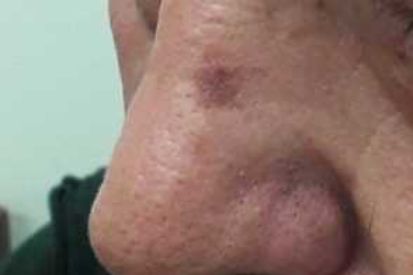
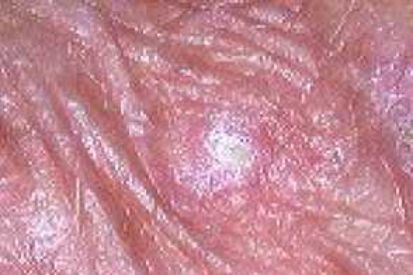
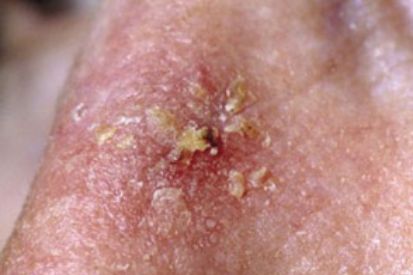
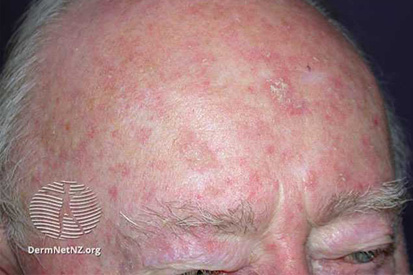
What are the Symptoms of Actinic Keratosis?
- Actinic Keratosis can reach a quarter of an inch in size and may even disappear for a time.
- May appear red, light or dark tan, pink or skin-colored.
- These patches may be sensitive or tender and may become inflamed or even bleed.
- Although the patches are typically dry they may also present as lesions that do not heal or as thick, horny growths.
Causes of Actinic Keratosis
- Actinic keratosis (AK) is primarily caused by prolonged exposure to ultraviolet (UV) radiation from the sun or artificial sources like tanning beds.
- The cumulative effect of sun damage leads to the development of these precancerous lesions.
- The risk of actinic keratosis increases with age, reflecting the cumulative impact of sun exposure over the years.
- Individuals with weakened immune systems may be at a higher risk of developing actinic keratosis.
How to Prevent Actinic Keratosis
- Sunscreen: Regularly apply a broad-spectrum sunscreen with a high SPF to exposed skin, even on cloudy days. Reapply every two hours and more frequently if sweating or swimming.
- Protective Clothing: Wear protective clothing, such as wide-brimmed hats, long sleeves, and sunglasses, to shield the skin from direct sunlight. Clothing with a tight weave offers additional protection.
- Seek Shade: Limit direct sun exposure during peak hours, typically between 10 a.m. and 4 p.m. When outdoors, seek shade under trees, umbrellas, or other structures.
- Avoid Tanning Beds: Refrain from using tanning beds, as they emit harmful UV radiation that contributes to skin damage.
- Regular Skin Examinations: Perform at-home self-examinations of the skin regularly to detect any changes or new lesions as well as schedule annual total body skin exams with your trusted dermatology provider. Notify your provider of any suspicious growths or changes you find.
- Limit Alcohol and Tobacco: Excessive alcohol consumption and smoking can contribute to skin damage, so moderation or cessation of these habits is beneficial.
- Stay Hydrated: Proper hydration helps maintain skin health. Drink an adequate amount of water to support overall skin function.
Actinic Keratosis FAQs
Actinic keratosis lesions are generally not painful, and most people experience no discomfort. However, some individuals might feel sensitivity, irritation, or stinging sensation in the affected areas. If you notice any changes in your skin, such as new lesions or unusual discomfort, it's crucial to consult a dermatologist for a thorough evaluation and appropriate care. Early assessment can help manage potential issues effectively.
Actinic keratosis usually does not resolve on its own. These precancerous lesions can advance to squamous cell carcinoma, a form of skin cancer, without treatment. It’s essential to schedule an appointment with your dermatologist if you suspect actinic keratosis. Your dermatologist can evaluate the lesions, suggest effective treatments, and regularly monitor your skin for any signs of progression or changes over time. Early intervention is key to preventing complications.
A dermatologist diagnoses actinic keratosis primarily through a visual skin examination. To confirm the diagnosis or exclude skin cancer, a biopsy may be necessary. During this procedure, a small sample of the affected skin is removed and analyzed in a laboratory to provide a definitive diagnosis and guide appropriate treatment options.
Apply sunscreen every day, even when it’s cloudy or during winter, as UV rays can still pass through clouds and harm your skin. For optimal protection, choose a broad-spectrum SPF 30 sunscreen and apply it 15-30 minutes before going outside. Reapply every two hours, or more frequently if you’re swimming or sweating, to maintain effective defense against UV damage.
From Our QualDerm Family of Brands: Sunscreen Recommendations
How to Treat Actinic Keratosis
Treatment options may include:
- Cryotherapy: The use of liquid nitrogen to freeze the lesions superficially
- Topical Creams: Designed to eliminate Actinic Keratosis in the affected areas.
Featured Blogs
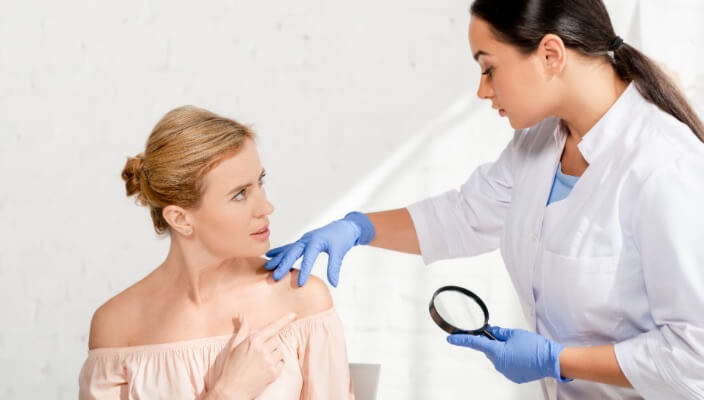
- General Dermatology
- Skin Care
- Chronic Skin Conditions
Skin tags are benign growths of excess skin which form in response to rubbing and irritation. Read more to learn about what we can do about them.
Read More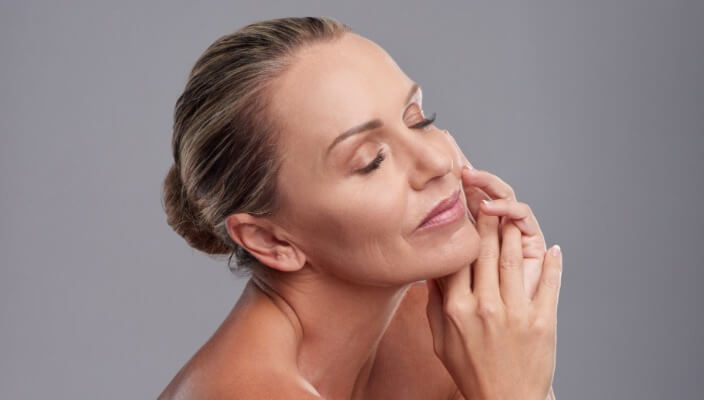
- Skin Care
- Cosmetic Treatments
I had my second Elos Sublative RF Microneedling Treatment (which is an amazing new treatment we’ve added for addressing fine lines, wrinkles, acne scars and texture).
Read More
- Skin Care
- Cosmetic Treatments
Entering their 40s warrants special attention to neck care. Often overlooked until signs of aging have already manifested, it's imperative to begin applying sunscreen to the neck daily.
Read MoreFeatured Products
Check your local office for current stock!
Check your local office for current stock!


